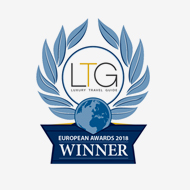There are several good reasons for this, such as the fact that massage therapy helps move lymph fluid around the body and oxygenate organs and tissues. Plus, there’s probably something healthy going on in the fact that human touch is taking place. However, there is a widespread belief, especially among the leaders in Western medicine, that massage therapy can’t possibly be considered a medical treatment. Most insurance companies still refuse to pay for massage therapies, and few doctors prescribe it, although the number of doctors recommending it has been increasing over the last few years.
I believe that massage therapy is shunned by the medical community primarily because it is considered an unsophisticated treatment — you don’t need a medical degree to give someone an effective massage. There’s not a lot of equipment involved in massage therapy, it doesn’t have a lot of cool technology, and it doesn’t require years of training. And thus, it is looked upon as something that is below Western medicine, both by doctors and by many patients.
But all of this is a distortion – something doesn’t have to be complicated or cool to be effective as a healing treatment. Massage therapy gets to the fundamentals — that is, the power of human touch, and the spiritual healing potential of one person’s hands touching another person’s body along with positive healing intent. These are timeless principles of healing that don’t require technology to be effective.
Given that massage therapy and therapeutic touch are so effective in helping patients heal themselves, I find it astounding to observe the lack of physical contact between doctors and their patients in clinics and hospitals across the country. Doctors almost seem scared to touch their patients, and in fact, many doctors don’t want to be touched, either. This lack of touch keeps everything at a “safe distance” – it makes their interactions non-personal and sterile. It also allows the doctor to keep patients at a distance, where they can perceive them as patients with patient IDs rather than human beings with souls and spirits and emotions. It is this distance – this chasm between doctors and patients – that contributes to the lack of effectiveness in modern medicine.
True healers are willing to get involved with their patients in terms of understanding them, seeing the world from their perspective, and even touching them in a healing way with positive intent. That’s why our modern physicians are outstanding technicians, but terrible healers. Personally, I would much rather see a massage therapist than a physician, unless I were suffering from sort of radical, acute injury such as an accident in which case, of course, Western doctors and surgeons are the very best in the world. But when it comes to treating chronic disease and maintaining a high degree of health on a regular basis, massage therapy and healing touch offer an outstanding system of healing that I highly recommend.








